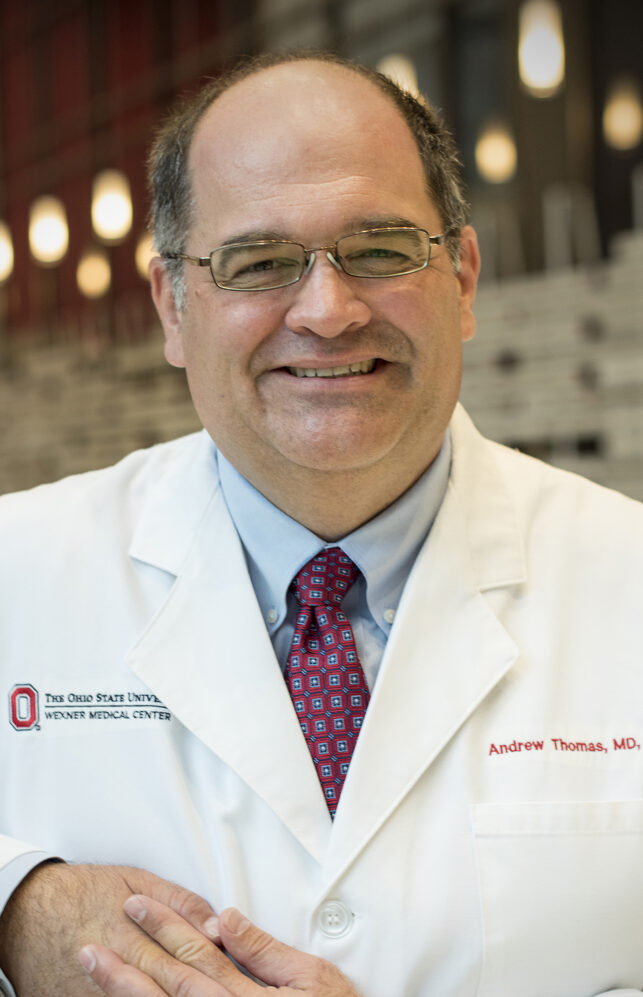COVID-19 has shaped the future, and we can reflect with some optimism

Interim Co-Leader and Chief Clinical Officer
The Ohio State University Wexner Medical Center
When COVID-19 began its spread across the globe, we were all forced to adapt to a new reality. The deadly virus was tremendously destructive, leaving well over six million deaths in its wake, including nearly one million deaths in the U.S. As healthcare personnel rose to the occasion, The Ohio State University Wexner Medical Center developed some long-term, positive changes that are likely to benefit all of us long after the threat of COVID-19 has faded.How did the scientific community respond to the need for rapid solutions?
The rapid development of COVID-19 vaccines and new treatments was unprecedented. Now we know exactly how quickly we can create these innovations if researchers, clinicians and policymakers work together toward urgent goals. That urgency created a paradigm shift that got scientists to think more globally, to find new partnerships, to repurpose existing technology and to share breakthrough discoveries in new ways. We can apply this same thinking to other public health crises and common, often fatal diseases that continue to impact people worldwide, such as infant mortality, addiction, cancer and heart disease.What was the impact on access to care during the pandemic?
Adjusted regulations and payment policies helped rapidly expand virtual health services. Not only did this expand our capacity, but patients enjoyed improved access to virtual care that didn’t require them to miss work, find alternate childcare or spend unnecessary money traveling to distant appointments. At Ohio State, we saw a tremendous drop in missed appointments, and, in fiscal year 2021 alone, projections show that we saved patients nearly 22 million miles of driving, one million gallons of gasoline and reduced the equivalent of the annual emissions of 1,700 cars.
These benefits likely will continue beyond the pandemic as patients and healthcare providers alike are more familiar now with telehealth options and expect it to be available in some circumstances. We need regulators and payers to understand the importance of the expanded role of virtual health, and we need them to make changes in regulations and payment structures during the crisis permanent so that we can sustain the expansion of virtual health services when appropriate. In what ways did COVID-19 change collaboration in healthcare?
COVID-19 forced health organizations to ramp up the partnerships they already had with one another and build new pathways for sharing resources. Early in the pandemic, Ohio State scientists developed a process to make and distribute viral transport media and 3D print COVID testing swabs that had run scarce due to supply chain disruptions. Not only did we share these supplies with other regional hospitals and with our state government, we also shared these innovations with others nationwide. More recently during the Omicron surge, when hospital staff was stretched thin due to the rise in cases, our state government representatives were able to secure temporary help from the Ohio National Guard to work in our state’s hospitals and COVID-19 testing sites. These relationships can continue in the future, and we’ll be even better prepared for widespread health crises.How did the pandemic impact the mental health of healthcare workers?
The pandemic put on stark display the emotional toll on healthcare workers. It exacerbated the pre-existing need for a full spectrum of mental health support options for healthcare personnel — from preventive care to programs that build resilience to interventional treatment and support. At Ohio State, we established the Stress, Trauma And Resilience (STAR) program in 2009 that offers training, support and care for healthcare workers facing recurrent, difficult and stressful clinical situations. During the pandemic, we expanded support options to a live phone line staffed with trained clinicians who offered peer support for those who were struggling with exhaustion, frustration, uncertainty and fear.
The pandemic has created a new conversation around the emotional and psychological impacts of “second victim” trauma on healthcare professionals. We are excited to share our best practices with other healthcare systems in Ohio and beyond to ensure that all healthcare organizations are equipped to provide the same level of support — and not just during a pandemic, but all of the time. This rise in mental health struggles will continue beyond COVID-19, and the coping skills these programs offer can last a lifetime.
Article From: Modern Healthcare

